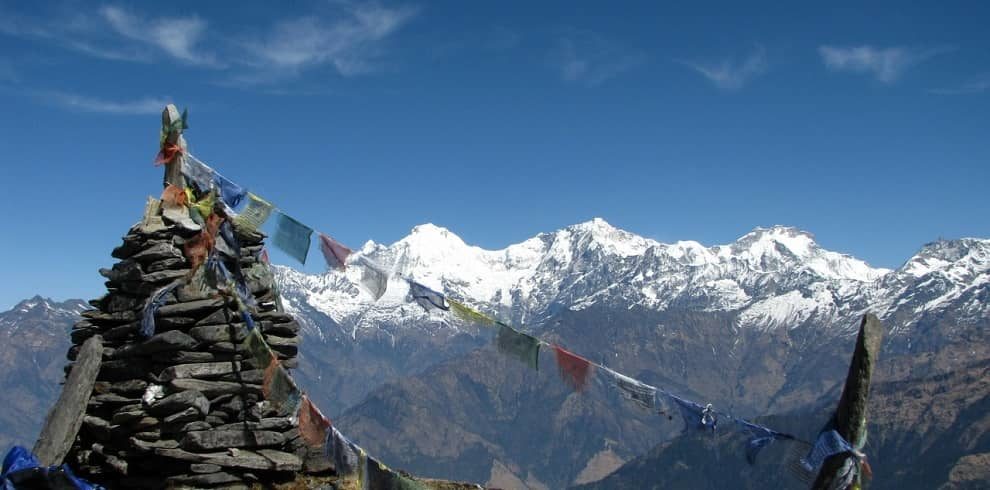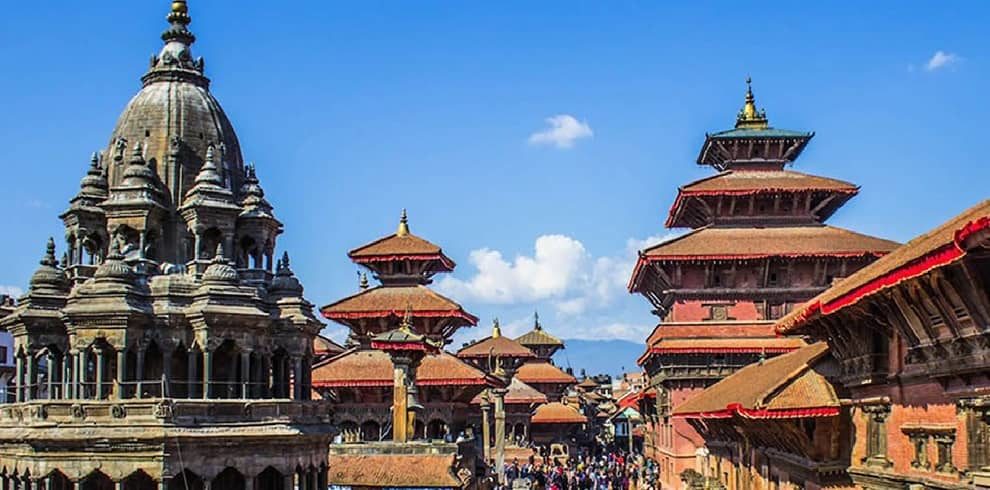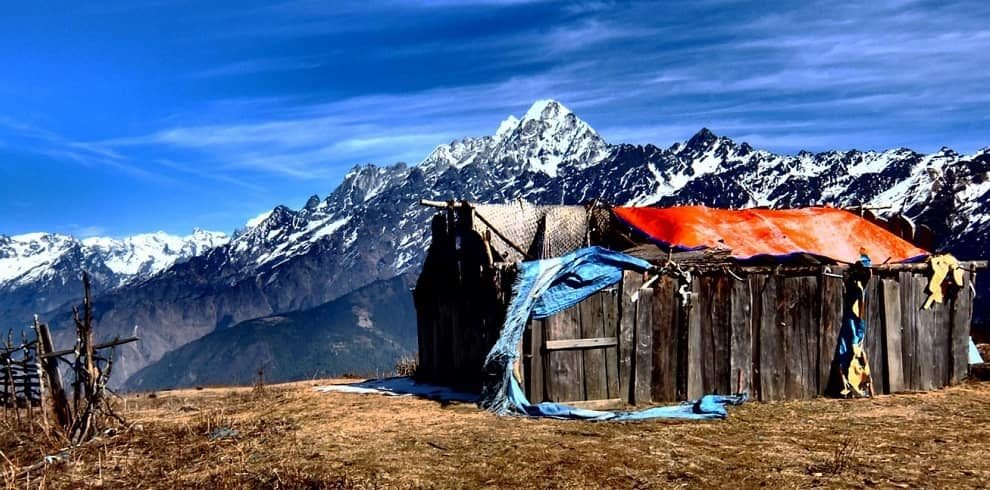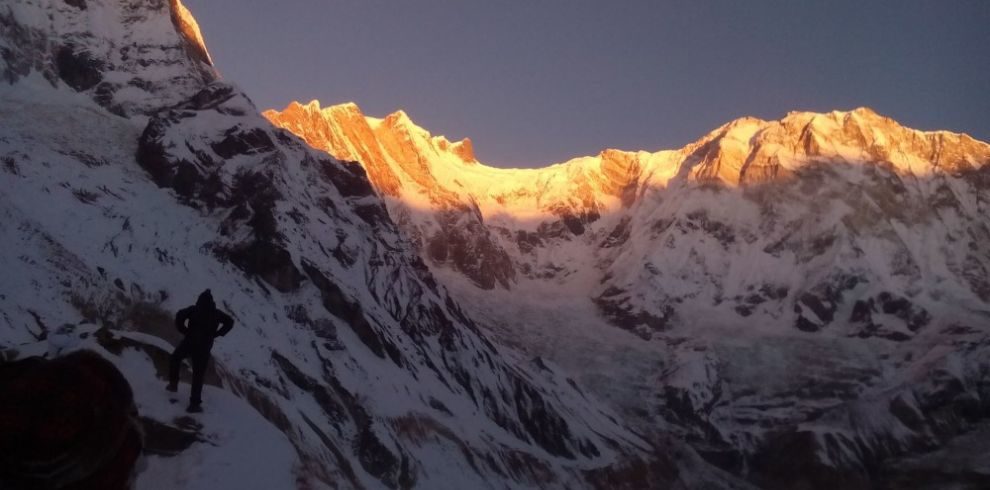Introduction To Ganesh Himal Trek In Nepal
The Ganesh Himal Trek is one of the Himalayas’ least-explored locations and undiscovered hiking paths. Ganesh Himal Trekking, which lies between Langtang and Manaslu, is full of hidden treasures and miracles.
A trek in Nepal’s center eastern region, one of the Himalayas’ least-explored places, is located between the most popular trekking sites of Langtang to the east and Manaslu to the west.
A trip through the magnificent hidden valley that allows you to experience a diverse range of cultures and natural scenery. Ganesh is a Hindu god with an elephant head.
The Peaks (Ganesh I, Ganesh II, Ganesh III, Ganesh IV), Mount Manasalu, Tibet range, Langtang, and Annapurna are all visible from this district, as well as views of the Tibet range, Langtang, and Annapurna. Traveling through the Ganesh Himal area allows you to photograph the beautiful scenery of mountains, waterfalls, Saint George, dramatic landscape paintings, towering cliffs, and stunning rock formations.
In our 10-day Ganesh Himal trek itinerary, which begins in Balche and ends in Dhading Besi, we will travel through alpine meadows before arriving at a massive glacier beneath snowcapped mountains.
After a short drive from Kathmandu, the trek begins in Balche. We hike from Blache to Singla Pass, the highest point on the trail. The trail passes through a dense forest of bamboo, pine, and fir trees in the Himalayas.
From the Singla pass (4,200m/13,779ft), we will have a panoramic view of the Ganesh Himal massif (7,893m), Manaslu (8,156m), Annapurna (8,091m), and Langtang (8,091m).
The trail descends to Sertung and Chalish after passing via the Singla pass. The next day, we spent wandering through distant hills and mountains and relaxing at a hot spring on Ganesh Himal’s lap, before heading to Neber to witness the best scenery from the Ri Gaun of a town called Jharlang at the opposite end.
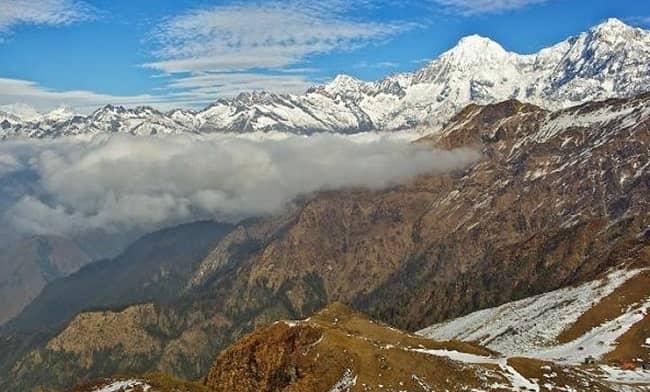
We arrive in Jyamrung Danda, the endpoint of this walk, after two days of trekking from Ri Gaun. This location allows us to visit a historical royal home and watch the sunrise before boarding a bus to Dhading Besi, from where we will travel to Kathmandu.
The Ganesh Himal walk is suitable for people of all ages, as it allows you to experience a distant lifestyle through homestay trekking and watch the stunning landscape of mountains as well as the mix of ethnic groups living nearby, each with its own culture, traditions, and religious practices.
Highlights Of Ganesh Himal Trek In Nepal
- Kathmandu, Nepal’s main city, has a new hiking destination.
- Zinc, crystal, ruby, tin, and other precious minerals are found in this area.
- The sacred Parvati Lake (Kunda), as well as the twin sacred White and Black Lakes, are all sacred.
- On the way to Neber, there’s a natural hot spring.
- View of Ganesh Himal, Langtang Himal, and Manaslu Himal from a close distance.
- Ethnic communities’ respectful hospitality
- Farmland, verdant meadows, and rocky hills make up the varied terrain.
- Domestic animals such as sheep, yak, goat, and ox have homes here.
- Rhododendron, pine, oak, and bamboo dense woodland
- Several rivers, suspension bridges, Georges, waterfalls, and stone-driven mills can all be found here.
Benefits of Ganesh Himal Trek In Nepal
- Private transportation to and from Kathmandu International Airport (Tribhuvan International Airport) from our hotel in Kathmandu (TIA).
- To check blood oxygen saturation levels at high altitudes, bring a pulse oximeter. It’s a crucial signal for spotting early indicators of imminent altitude sickness and other health hazards.
- Medical Supply Kit
- If you don’t have your own, we will make arrangements for sleeping bags and down jackets.
Equipment Checklist
Equipment lists for The Ganesh Himal Trek
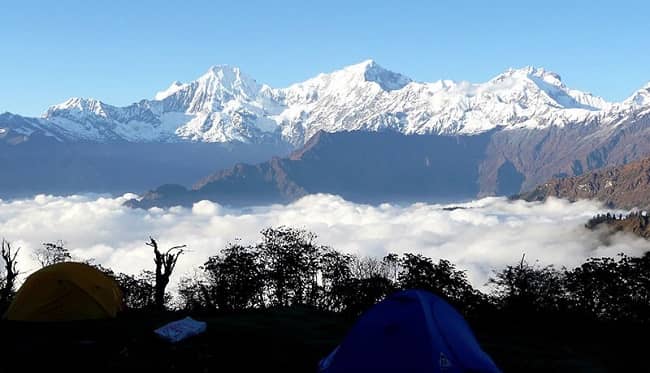
Head
- Scarf or hat for the sun
- Winter hat, insulating hat, or a hat with a wide brim
- Extra batteries for the headlight
Face
- Sunscreen
- Sunglasses that block UV rays
- Wipes for the face and body
Hands
Lightweight gloves
Heavyweight winter gloves
Body
- Shirts for hiking
- Shirt with a long sleeve made of synthetic fiber.
- Rain jacket with hood
- Jacket made of fleece
- Cotton pants that are light and airy.
- T-shirt (bring lightweight wool)
- Underwear made of polypropylene
- Jacket with down feathers (available for rent in Kathmandu)
- Sweater
- Jacket and pants that are waterproof
Footwear
- Boots for Hiking
- Socks made of thick wool (Take an extra pair of thick light socks)
Essential gear
- A daypack or a backpack (Size depends on whether you take a porter or not)
- Bottle with a heating element
- Purification of water
- Pole for hiking
- Bag for sleeping (-15 degree bag is best for high altitude trekking)
Toiletries
- a drying towel of medium size
- Toothbrush
- Toothpaste
- Deodorant/floss/toilet paper
- Biodegradable soap in a bar
- a pair of nail clippers
- Mirror, little
Personal accessories
Money
Watch
Cell phone
Camera
Extra items
- Kit for first aid
- Extra passport pictures and passport photocopies
- Pencil and notebook
- Binoculars
Trip Information
Getting there
You will arrive at Tribhuvan International Airport in Kathmandu, Nepal’s only international airport. Arrival in Kathmandu necessitates an overnight stay in a hotel. The next day, we’ll take the bus or a local vehicle to our location.
Free Transfer
We provide a free airport pick-up and drop-off service to your chosen hotel. At the Tribhuvan International Airport, a representative will greet and welcome you. They will have a leaflet with your name on it and will give you either a Marigold garland or a khada as a welcoming gesture. Then, in a private vehicle, they will transport you to your hotel. Similarly, when you return, we will transport you from your accommodation to the airport.
Accommodation
The Ganesh Himal Walk 10 days is a long trek that includes 8 nights in mountain native lodges that give basic amenities and make you feel at ease thanks to the wonderful hospitality of the locals. You will need two nights in Kathmandu to rest before and after the hike, which is not included in the program. There is a fantastic selection of hotels to suit all budgets. The room is virtually twin-sharing-style, with a bed, mattresses, blankets, and pillows. Showers will be available for an additional fee. In the Himalayan region, we have good public relations with local service providers.
Meals
This trek’s lunch package is really convenient. The bundle includes three meal items: nine breakfasts, nine lunches, and eight dinners. The meals will be chosen from the lodge’s menu and will be fresh, hygienic, delicious, and nutritional. Traditional local, Asian, and western cuisines are represented on the menu.
At high altitudes, we strongly recommend liquids such as green tea, lemon tea, hot lemon, ginger tea, and garlic soup (must), among others. Meals in Kathmandu are not included in the packages, although there is a wide selection of Nepalese and international cuisine to pick from, depending on our preferences.
All personal bills (alcohol drinks, hot and cold drinks) in tea houses/ lodges or cafes are excluded from the package, save for the usual meals mentioned (breakfast, lunch, and dinner with seasonal fruits).
Best Season
When selecting whether or not to trek to The Ganesh Himal, one of the most crucial elements to consider is the weather. Trekking is best done in the spring, summer, and autumn. Strong winds, storms, and slick terrain make trekking difficult during the winter and monsoon seasons.
January – February
This is the coldest period of the year, especially in early January and early February. The weather can be bitterly chilly. Even though the day is warm and beautiful with bright skies, the night will be bitterly cold. Trekking is not recommended during this time.
March – April
The Ganesh Himal Trek is best done during this time of year. Throughout the hike, the weather is really pleasant. There will be breathtaking vistas of the central Himalayan range. Temperatures may begin to rise in mid-March, and bright sky will allow snow mountains to be viewed at their best. During this period, many trekkers are successful in their endeavors. Rhododendron flowers will be flowering at their peak in a variety of colors along the way.
May – June
This is also a great time to go hiking shortly before it rains. Nepal’s rainy season runs from the end of June until the middle of August. The walk is much more fun in the spring and summer.
July – August
This is when the rainiest part of the year occurs. Trekking during this season is not recommended due to the increased difficulty caused by the rain. The trails would be extremely slick. It would be dangerous to have to go along ridges and down trails.
September – October
As winter approaches, snow begins to fall in the Ganesh Himal Region, making trekking difficult. The nights will become cooler. November is the busiest month since it is the clearest month with the most beautiful days. The daytime temperatures are fairly steady and consistent, allowing for a spectacular view of the bright blue sky and mountain. The temperature begins to drop in December, and snow begins to fall.
The weather in the Himalayas is notoriously unreliable, with temperatures fluctuating dramatically from day to night.
Acclimatization
The climb includes a day of acclimation at elevations above 3500 meters, where there is a substantial danger of altitude sickness, commonly known as acute mountain sickness. Altitude sickness is preventable, but if the symptoms are ignored, it can be fatal.
Our schedule is set up to allow for a gradual ascent so that the body can adjust to the new altitude. All of our trekking leaders and guides have thorough first-aid training and vast Himalayan expertise. At the first hint of symptoms, please notify your group leader and guide.
We assure you that your health is in capable hands. Precautions will be suggested by your hike leader or guide. The most effective method is to take your time and drink plenty of water, at least 4 liters every day. If altitude sickness is severe, the only treatment is to descend promptly.
Please keep in mind that your group leader has the final say on whether or not to continue climbing based on your general health. It’s critical to remember that some people are more vulnerable than others. Your group leader will also be able to tell you whether or not you can continue the walk based on your current health.
Trip Grade: Fitness level, Medical, and Health
The routes around Ganesh Himal are difficult but rewarding. The walk will take between 4 and 7 hours every day, depending on the destination and the number of pauses we take. With rugged and stone-paved trails, the trek is largely uphill or in severe descents.
It is not impossible for a typical person to participate in these treks, but being healthy and exercising regularly will make the walk more comfortable and enjoyable. A trekker’s previous trek experience, as well as regular exercise and yoga, is a benefit. Furthermore, if you enjoy trekking, you may make it happen and achieve your goals.
This walk, on the other hand, is not recommended for people who have certain medical concerns, such as heart or lung disease. Because the majority of the walk includes moderate to difficult climbing, it could be hazardous to their health. Before attempting this expedition, we urge that you speak with your doctor. In addition, we ensure that you have all of the necessary medical kit supplies for the walk.
Trekking group/single
We can arrange both group and private treks. The larger your group, the greater the discount you will receive. Discounts are not available for parties.
We can accommodate any group size. A trekking guide and porters will be assigned to each party (one porter for every two trekkers). For trekking groups of 12 or more, we will additionally supply an assistance guide.
A typical day on the trek
Every day will be rewarded with a one-of-a-kind experience of walking, climbing, shooting photography, and touring the surrounding villages. During the adventure, an experienced, pleasant, and trained expert Sherpa will join us on the hike and give information and historical details about the locations.
We shall be accompanied by the porters who will be carrying our bags. We will, however, be carrying our own modest bag containing all of the necessary materials.
The day begins with a nice cup of tea or coffee in the morning. We set off on the day’s walk from 7 AM to 8 AM, depending on the duration and nature of the day’s trek, after packing our bags and eating a hearty breakfast.
We will take lunch about midday on the way to the next destination after hiking for three to four hours, and we will continue after roughly an hour of respite.
The trek in the afternoon is usually shorter, lasting two to three hours. We nibble on the additional dietary food once we arrive at our overnight lodge/tea house/tent. We’ll also get some free time to go exploring in the area.
Dinner is served between 6 and 7 p.m. We will spend some valuable time in friendly chats before retiring to bed, discussing the events of the day. The expedition leader/guide will give us an overview of the next day’s activities.
Following the briefing, we play onboard games like monopoly and cards, as well as watch climbing documentaries that are available. Most visitors learn the Nepalese language in a light and enjoyable manner from our personnel or read books before retiring to their beds for a well-deserved rest.
Communication on trek
On most routes, cell phone coverage is available; however, depending on which network you use, this service may or may not be dependable. We may give you a second local SIM card with adequate access for talking to family and friends via your cell phone if you want it. although On some days, there is no mobile network service at high altitudes.
We’ll interact with all of our valuable clients at least once a day through our leader to ensure that you’re happy with our service. The signal may also fluctuate as you climb upward, depending on the type of network you use. We can give you a second local sim card for communication if you desire it.
Extra personal expenses on trekking
We make every effort to cover all extra costs not included in the program. Our clients are responsible for their own meals and lodging in Kathmandu, as various types of hotels/lodges (both luxury and cheap) may be booked easily online or on request.
All of our valued clients will be required to carry personal spending money with them to cover the costs of lodging in Kathmandu, visa processing, travel insurance policy purchase, beverages, hike snacks, hot and cold drinks, gratuities to trekking crew members, souvenirs, and other expenses. We recommend taking cash (dollars) that can be exchanged for rupees here because only Nepalese money is accepted during the hike.
Electricity and battery recharge, water on the trek
Electricity for camera and mobile battery recharge is offered throughout the Ganesh Himal trek lodges for a fee at all lodges. The majority of the lodges have hydroelectricity, while some have solar panels. Water can be purchased in the form of packed mineral water from local lodges and en-route shops, or boiled water can be filled at an additional fee. In drinking water, a water purification pill is recommended.
You should avoid drinking water from the river, tap, or well up there since it may not be as safe as it appears.
Insurance Policy
Because the Ganesh Himal trek takes you at a high altitude, there is a danger of altitude sickness as well as other unforeseen incidents like landslides.
As a result, travel insurance is required for the ABC journey. Before beginning the Annapurna Base Camp Trek, all trekkers must produce a copy of their complete travel insurance policy certificate. Medical and emergency repatriation must be covered, as well as helicopter rescue and evacuation costs at high altitudes.
We can make insurance company recommendations based on our clients’ experiences, but we do not sell life insurance.
After booking a hike, all trekkers must submit comprehensive insurance information. In the event of an emergency, your insurance policy and other documentation will be used to conduct a timely and effective rescue effort.
Please double-check that your insurance covers the cost of mountain rescue as well as medical expenses at the highest trek elevations.
We advise our clients to contact their insurance provider and confirm that their policies cover helicopter rescue and evacuation at heights of up to 6,000 meters. Do not rely solely on the information on their website.
Passport and visa
Except for Indians, all foreigners must have a valid visa to enter Nepal. An on-arrival visa can be obtained at the Tribhuvan International Airport or at border crossing sites.
You’ll need a passport that’s valid for at least six months, a passport-size photo, and visa fees to apply for a visa. The current cost of a 30-day visa is $50 USD (to be paid in cash). More visa information is available at www.immigration.gov.np.
Citizens of China and members of the South Asian Association for Regional Cooperation (SAARC) (Bangladesh, Bhutan, India, Maldives, Pakistan, and Sri Lanka) are exempt from visa fees.
A free visa will be given to youngsters under the age of ten.
An on-arrival visa is not available to all countries. Contact your nearest Nepalese embassy if you are a citizen of Nigeria, Ghana, Zimbabwe, Swaziland, Cameroon, Somalia, Liberia, Ethiopia, Iraq, Palestine, or Afghanistan.
We also advise our trekkers to add at least one or two extra days to their trip towards the conclusion in case of a delay.
Money exchange
The majority of foreign currencies can be exchanged at banks and money exchanges. Money exchangers are also reliable sources of funds. Small sums of cash may also be exchanged at the hotel where you are staying. In Kathmandu, money exchange services are available.
Money changers or money exchangers may be found all around Thamel in Kathmandu. The going rate is usually posted on a board in front of the establishment. The Nepali Rupee is the country’s official currency (NRP). Its sign is frequently shown as Nepal’s government has outlawed the import, export, and use of Indian rupees of 500 and 1000 rupees.
If you arrive in Nepal with these notes in your possession, they will be confiscated and you may be punished. Despite the security advantage of a traveler’s check, various inconveniences such as a lengthy process and a high rate of the commission may occur during the processing at banks.
If your card is linked to the International Cirrus System, you can withdraw cash (in Rupees only) from one of the numerous ATMs in Kathmandu, or exchange your travel cash at a bank in Kathmandu, where the service cost will be around 4% or more depending on the bank. If you utilize the bank, there is a daily transaction restriction on cash withdrawals.
Please be aware that most Asian establishment banks will not accept foreign currency notes that are old, ripped, or faded, and that exchanging them at banks might be difficult or result in additional penalties. Please make sure you have brand new, unblemished notes.
Foreign currency notes that are old, damaged, or faded will not be accepted by the majority of Asia’s established banks. Please make sure you have fresh, clean notes.
Luggage
The weight limit for your luggage is 9 kg per trekker; porters will be assigned to carry your gear; two individuals will be assigned to one porter, and the total weight of your luggage should not exceed 18 kg. Our porters are never overburdened. You should, however, bring your own bag or backpack (with your valuables or other vital items). Only bring what you need; any excess baggage can be left for free at your hotel or at our store and will be safe.
Before we depart from our office, we will double-check everything (luggage, equipment, etc.) in our briefing.
Safety
We ensure the safety, security, and contentment of our valued clients. For us, the most crucial concern is safety. We’ll be carrying all of the required gear, equipment, and first-aid kits for the hike. Our leaders and guides are well-versed on the subject and have received comprehensive first-aid training.
If a trekker becomes ill as a result of the altitude, the trekker must determine whether or not to continue, as health is paramount. In the event of an emergency, the rescue chopper will be on standby to transport you back to the lower elevation. During the journey, each group will stay together to ensure that no one gets separated.
Responsible Travel
We are a company that specializes in eco-tours (treks). We recognize that increased tourist visits to trekking areas may have a negative impact on the local ecology. As a result, we make every effort not to disrupt the ecosystem in the trekking areas.
We collaborate with the Kathmandu Environmental Education Project (KEEP) to plan environmentally sustainable trips that benefit both trekkers and communities in the trekking areas.
Our Crew
Our skilled and experienced guides/Sherpas will accompany you on your trek to Ganesh Himal to ensure that you have a pleasant experience. Porters will carry your luggage, and if there are more than 12 people in your group, we will add an assistant guide.
Our crew members are Himalayans who have a high level of physical endurance and are accustomed to living at high altitudes.
We value each and every one of our employees. We cover their insurance, clothing, food, lodging, and equipment, in addition to their income, throughout the adventure.
When our guides and porters become unwell or injured, they receive medical attention. We make every effort to ensure that our employees are happy because we believe that only happy individuals can make other people happy.
Our employees have the following qualifications:
- Authorized Trekking Guide Training Certificate
- Intensive Wilderness First Aid Training
- Fluency in English and another major language
- Conservation and Biodiversity Training
- Experience with rock climbing
Tipping in Nepal
Tipping is accepted in Nepali culture and is seen as a sign of excellent service. Tipping is entirely up to the trekkers’ discretion and should be commensurate with the level of service received. We recommend tipping as a group at the end of the journey.
Booking and Payment Process
We are a government-approved and bonded trek and tour company in Nepal.
We are members of the Nepal Mountaineering Association (NMA) and the Trekking Agency Association of Nepal (TAAN).
As a result, you may book the tours with complete assurance. To book the trip, we require a 10% deposit. Please provide us with relevant documentation such as a passport copy, passport-size pictures, travel insurance policy, and arrival and departure airline data within a week of booking your trip.
You can make a payment via bank transfer, Western Union, or directly through our website. You can pay the remaining trip cost in cash, bank transfer, or credit card after you get to Nepal. We’ll also send you the payment information through email.
Last-minute booking
It is preferable to reserve ahead of time, however for those who are unable to do so, We offer a special last-minute booking option.
If you make a last-minute reservation, you must pay in full for your trip 24 hours before the departure date.
We make every effort to run excursions at all times. However, in the event of a last-minute booking, we cannot be held liable for any delays caused by events beyond our control, such as bad weather or housing unavailability.
Trip Extensions
If you have extra days in Nepal after completing the ABC Trek, we can arrange sightseeing tours in and around Kathmandu Valley. A Chitwan jungle safari, paragliding, rafting, canyoning, and other adventures are also available.
Feedback is Highly Appreciated
After the Ganesh Himal Trek is completed, we will provide a farewell dinner in Kathmandu. The firm will offer you a trekking success certificate after the dinner (hard copy). You will also have the opportunity to provide us with feedback at the farewell supper.
You may also visit Bardiya National Park Tour-Cost, Distance, Itinerary, In Nepal – 4 Days
Overview Of Ganesh Himal Trekking
- Ganesh Himal Trek is surely the one for those who desire to discover the depths of a remote trekking route while experiencing thrilling vibes! We go through intriguing settlements and lush woodlands, taking in the region’s natural splendor.
- We immerse ourselves in the tranquility of the trail, which is surrounded by a blanket of mountains surrounding wonderful villages and dazzling lakes. The trail is less congested than the iconic Everest Base Camp or Annapurna Base Camp Treks, so we can enjoy the scenery to ourselves.
- The Ganesh Himal Trip path is a tough yet highly recommended trek for adventure lovers. It is a rural track unaffected by modernization, rich in ancient civilizations, traditions, and lifestyles. The most appealing mountain closest to Kathmandu is Ganesh Himal, named after the fabled elephant-headed Hindu God Ganesh. The sacred road to Ganesh Himal is not only full of miracles, but it also offers a wonderful landscape that will wow us at every turn.
